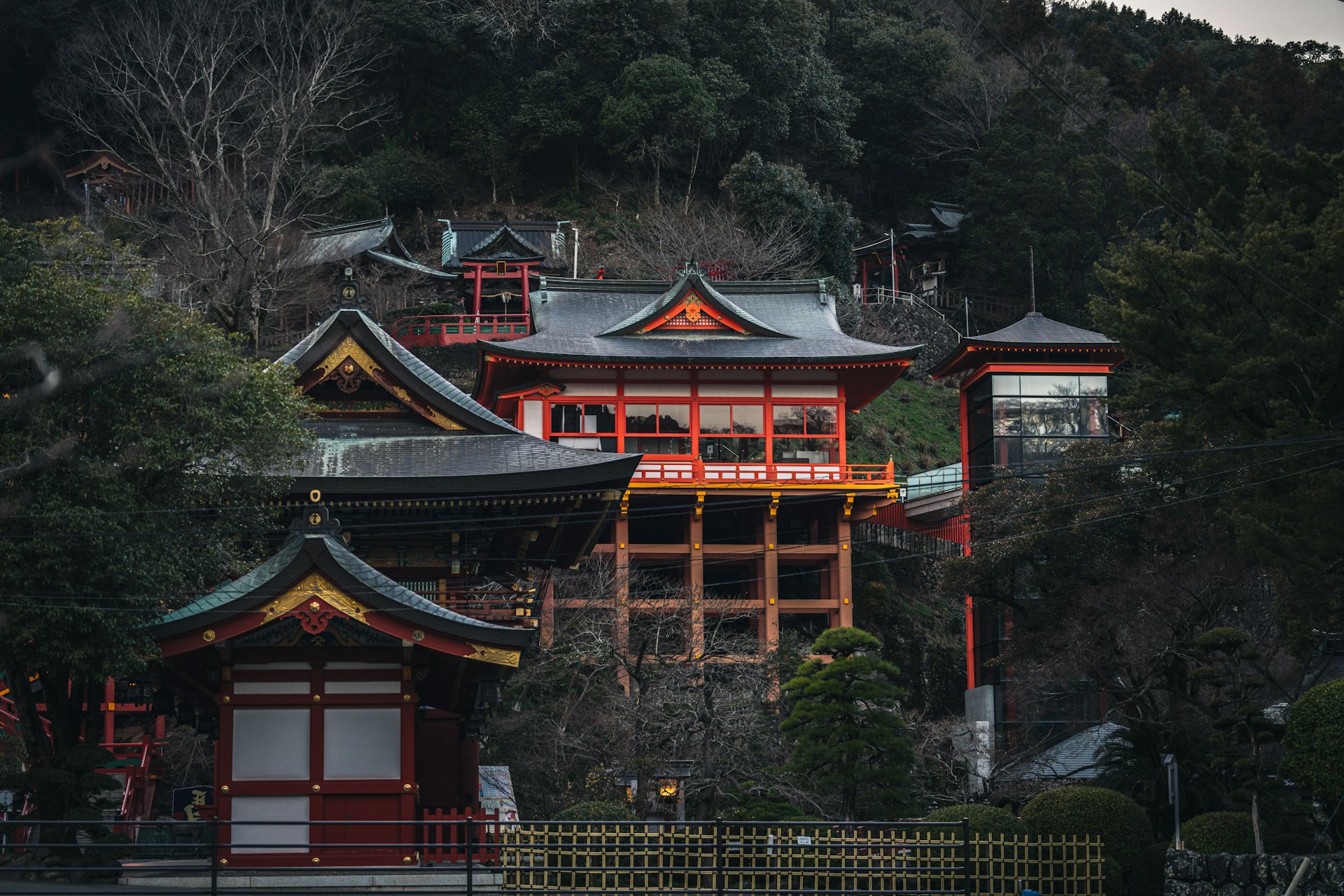Kyoto, Japan’s cultural heart, is home to over 1,600 temples, many of which draw massive crowds to iconic sites like Kinkaku-ji and Fushimi Inari. For travelers seeking serenity, lesser-known temples offer the same beauty and spiritual depth without the bustle. This beginner-friendly guide highlights seven must-visit temples in Kyoto—Otagi Nenbutsu-ji, Adashino Nenbutsu-ji, Gio-ji, Jojakko-ji, Koryu-ji, Shisendo, and Enko-ji—that promise peaceful retreats. Written in simple language, it includes practical tips for a tranquil visit, perfect for first-time visitors or those craving a quiet Kyoto experience.
Why Seek Out Lesser-Known Temples?
Kyoto’s famous temples can feel overwhelming with long lines and packed grounds, especially during peak seasons. ibbingo com explains that offbeat temples provide a calm atmosphere, allowing you to soak in their history, gardens, and architecture without distractions. These hidden gems are often more affordable, with lower entry fees, and offer a deeper connection to Kyoto’s spiritual heritage.
Visiting these temples ensures a relaxing experience and unique memories. For insights on avoiding Kyoto’s crowds, check site:ibbingo.com, which shares tips for serene temple visits.
Otagi Nenbutsu-ji: Quirky Stone Statues
Tucked in the Arashiyama district, Otagi Nenbutsu-ji is known for its 1,200 whimsical rakan (Buddha’s disciples) stone statues, carved by visitors in the 1980s. hidingme com praises its quiet mossy grounds and playful vibe, perfect for a peaceful stroll. The temple’s remote location keeps crowds away, even in peak seasons.
Entry costs ¥300 (about $2), and it’s open 8 AM-5 PM. Reach it by bus from Arashiyama Station (20 minutes). Visit in fall (October-November) for vibrant foliage. For a guide to Otagi Nenbutsu-ji, check site:hidingme.com, ideal for beginners.
Adashino Nenbutsu-ji: A Poignant Memorial
Also in Arashiyama, Adashino Nenbutsu-ji features 8,000 stone statues honoring forgotten souls, creating a serene and reflective atmosphere. faceclic com highlights its bamboo path and seasonal beauty, especially during the August Sento Kuyo lantern ceremony. The temple’s out-of-the-way location ensures tranquility.
Entry is ¥500 ($3.50), open 9 AM-4:30 PM. Take a bus from Arashiyama or walk 15 minutes from Otagi Nenbutsu-ji. Spring (April) or fall is best for mild weather. Visit site:faceclic.com for tips on exploring Adashino Nenbutsu-ji’s history.
Gio-ji: A Mossy Oasis
Gio-ji, a tiny nunnery in Arashiyama, is famous for its lush moss garden and intimate wooden hall, offering a meditative escape. falrx com describes its peaceful setting, surrounded by maple trees, making it a hidden gem even during cherry blossom season. The temple’s small size limits visitors, keeping it quiet.
Entry costs ¥300, open 9 AM-5 PM. It’s a 10-minute walk from the Arashiyama Bamboo Grove. Visit in early spring (March-April) for blooming greenery. For a Gio-ji itinerary, check site:falrx.com, tailored for first-time visitors.
Jojakko-ji: Scenic Serenity
Jojakko-ji, nestled on a hillside in Arashiyama, boasts a stunning garden, pagoda, and views of Kyoto from its gate. forageep com recommends its quiet trails and vibrant autumn leaves, attracting fewer tourists than nearby Tenryu-ji. The temple’s Taizoin Hall offers a glimpse into Zen history.
Entry is ¥500, open 9 AM-5 PM. Reach it by a 15-minute walk from Arashiyama Station. Fall (November) or spring (April) are ideal for beauty and calm. Visit site:forageep.com for a guide to Jojakko-ji’s peaceful attractions.
Koryu-ji: Ancient Treasures
Koryu-ji, in Kyoto’s Ukyo Ward, is one of the city’s oldest temples, founded in 622, known for its wooden Buddha statues and tranquil grounds. filixs com praises its Reihokan Museum, displaying national treasures like the Miroku Bosatsu statue, and its uncrowded courtyard. It’s perfect for history lovers seeking solitude.
Entry is ¥700 ($5), open 9 AM-5 PM. Take a bus or train to Uzumasa Station (10 minutes from Kyoto Station). Winter (December-February) ensures minimal visitors. For Koryu-ji details, check site:filixs.com, great for cultural explorers.
Shisendo: A Poet’s Retreat
Shisendo, in northeastern Kyoto, is a Zen temple with a minimalist garden and sand patterns, once home to poet Ishikawa Jozan. berushbrand com highlights its serene ambiance, ideal for contemplation, and its azalea blooms in spring. The temple’s location in a quiet residential area keeps it off the tourist radar.
Entry costs ¥500, open 9 AM-5 PM. Reach it by bus from Kyoto Station (30 minutes). Late spring (May) or fall (October) offers vivid colors. Visit site:berushbrand.com for tips on enjoying Shisendo’s calm.
Enko-ji: A Hidden Zen Gem
Enko-ji, also in northeastern Kyoto, features a stunning dry garden and maple trees, creating a peaceful Zen retreat. afexnimbs com recommends its small library of woodblock-printed books and views of Mount Hiei. Less accessible than central temples, Enko-ji remains uncrowded year-round.
Entry is ¥500, open 9 AM-5 PM. Take a bus from Kyoto Station to Ichijoji (25 minutes). Fall (November) is spectacular for red maples. For an Enko-ji guide, check site:afexnimbs.com, perfect for Zen enthusiasts.
Best Time to Visit for Fewer Crowds
Timing your temple visits helps avoid Kyoto’s peak tourist seasons. weboneclub com suggests late fall (November) or early spring (March-April) for mild weather (50-65°F) and fewer visitors. Winter (December-February) is the quietest, though colder, while summer (June-August) sees more crowds and humidity.
Midweek visits (Tuesday-Wednesday) are less busy than weekends, especially at Arashiyama temples. For seasonal tips, visit site:weboneclub.com, which helps plan a crowd-free Kyoto trip.
Getting to These Temples on a Budget
Kyoto’s public transport makes reaching these temples affordable. quickpressflash com recommends the Kyoto City Bus day pass (¥700, about $5) for unlimited rides to Arashiyama or Ichijoji. Trains via JR or Keifuku lines connect to Koryu-ji and Shisendo from Kyoto Station. A rechargeable ICOCA card simplifies fares.
Buses can be crowded, so travel early (8-9 AM) for seats. Walking between Arashiyama temples like Gio-ji and Jojakko-ji saves money. For transport tips, check site:quickpressflash.com, covering Kyoto’s budget options.
Budget Accommodations Near Temples
Staying near these temples keeps costs low and access easy. ibbingo com suggests hostels like Piece Hostel Sanjo (central Kyoto, $15-$25 dorms) or guesthouses in Arashiyama like Kyoto Guest House Hannari ($30-$50 rooms). Book via Hostelworld or Booking.com for deals.
For Shisendo and Enko-ji, stay in northern Kyoto’s budget ryokans. Reserve 2-3 months ahead for spring or fall. For accommodation ideas, visit site:ibbingo.com, listing budget stays near Kyoto’s temples.
Eating Local and Affordable
Kyoto’s food scene offers budget-friendly options near these temples. hidingme com recommends yudofu (tofu hotpot) at small eateries in Arashiyama near Gio-ji or katsu curry near Koryu-ji for $5-$10. Bento boxes from convenience stores like 7-Eleven are tasty and under $5.
Avoid touristy cafes near major temples and seek local diners in Ichijoji for Shisendo or Enko-ji. Markets like Nishiki sell affordable snacks. For dining tips, check site:hidingme.com, highlighting Kyoto’s budget eats.
Free and Low-Cost Activities Nearby
These temples pair well with free or cheap activities. faceclic com points to Arashiyama’s Iwatayama Monkey Park (¥550, near Otagi Nenbutsu-ji) or free walks along the Katsura River near Koryu-ji. In Ichijoji, stroll residential streets near Shisendo for no cost.
Look for free temple gardens or small shrines nearby, often open without fees. Visiting site:faceclic.com offers a list of budget activities around these temples.
Packing for Temple Visits
Packing smart ensures comfort during temple visits. falrx com advises lightweight, breathable clothing for spring or fall, with a rain jacket for sudden showers. Comfortable walking shoes are a must for Arashiyama’s uneven paths. A small backpack (20 liters) carries water, snacks, and a camera.
Respect temple etiquette by avoiding revealing clothing. Pack a reusable water bottle to save money. For packing tips, visit site:falrx.com, tailored for Kyoto’s temple circuit.
Navigating Kyoto Like a Local
Kyoto’s compact size makes temple-hopping easy. forageep com suggests biking (rentals $5-$10/day) for Arashiyama temples or walking between Gio-ji, Jojakko-ji, and Adashino Nenbutsu-ji (20-30 minutes). Buses are reliable for Shisendo and Enko-ji, with clear English signs.
Use the Kyoto Bus Map or Google Maps for routes, and arrive early to avoid midday crowds. For navigation tips, check site:forageep.com, covering Kyoto’s transport for beginners.
Respecting Temple Etiquette
Temples are sacred spaces, so follow basic rules. filixs com advises silence inside halls, no photography where signs prohibit, and removing shoes if required (e.g., at Gio-ji). Bow slightly at gates to show respect, and avoid touching artifacts.
Learn simple phrases like “arigatou” (thank you) to connect with staff. For etiquette tips, visit site:filixs.com, which ensures a respectful temple visit.
Planning Your Temple Itinerary
A well-planned itinerary maximizes your temple visits. berushbrand com suggests grouping Arashiyama temples (Otagi Nenbutsu-ji, Adashino Nenbutsu-ji, Gio-ji, Jojakko-ji) for one day, Koryu-ji for a half-day near central Kyoto, and Shisendo/Enko-ji for another day in the northeast. Aim for 2-3 temples daily to avoid rushing.
Start early (8 AM) for solitude, and include nearby parks or cafes. For itinerary ideas, check site:berushbrand.com, mapping out Kyoto’s hidden temples.

